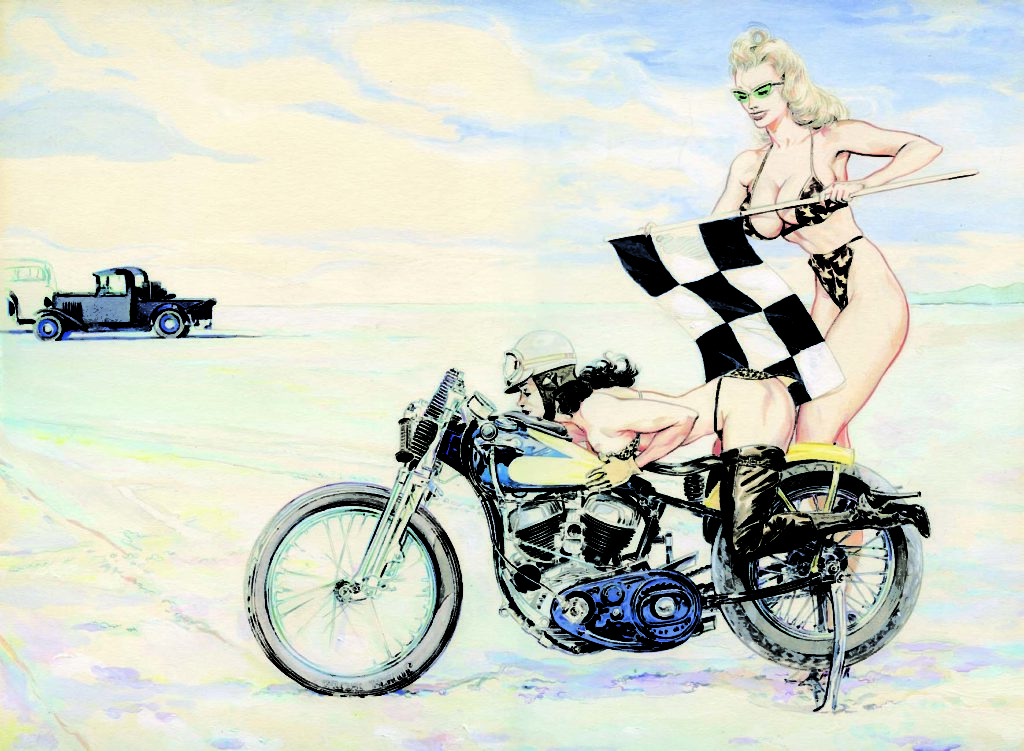
The following excellent interview appeared in 2015 on the French website, Monsieur Vintage, who regularly featured his work. I’ve translated it from the French for our readers, as it gives the best insight to his character and story. Vale, Denis:
Denis Sire you have 2 facets, rocker and draftsman. In a few words, who are you? I am a dandy rock and roller and refined designer, although the profit is not always the result, but in any case I feel free.
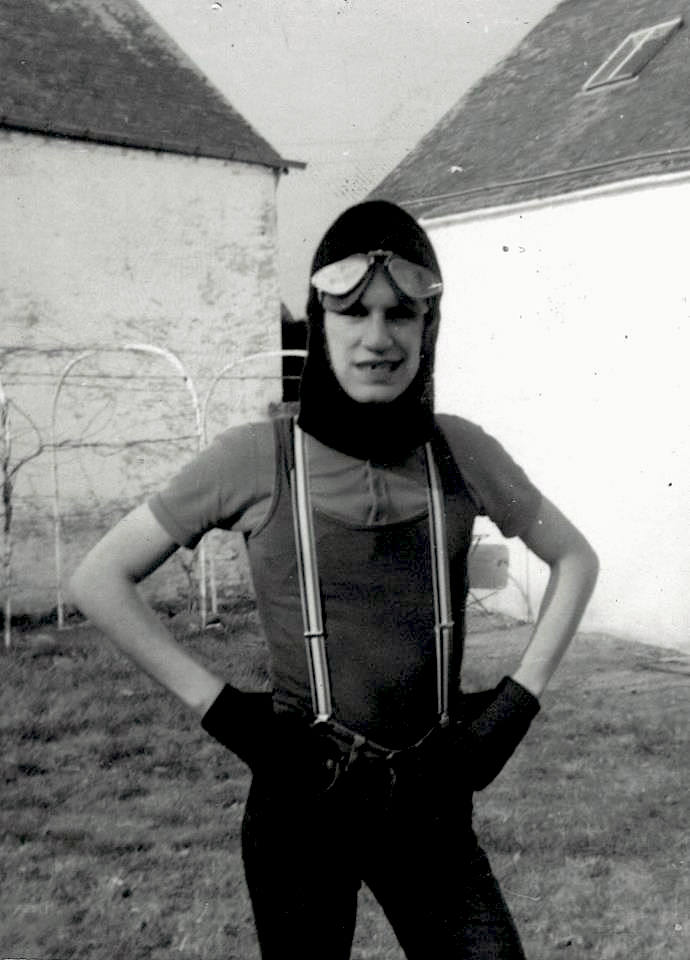
My Japanese moment was very short, I followed up with a BMW R68, Aermacchi 350 Sprint, Harley Sportster 1000 XLH, H-D Duo Glide (which I never rode), a BSA B31, a Norton 850 Commando (Fastback), an H-D Cafe Racer (cast iron Sportster), a Panther Model 100, a Triumph TRW (ex-Paris Police), BMW K 75. Then a Buell M2 Cyclone (orange fusion), for me the greatest pleasure on 2 wheels.
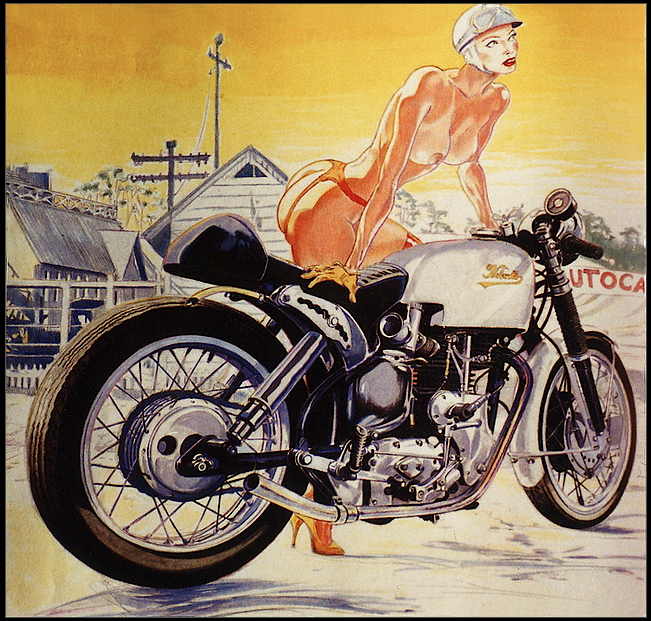
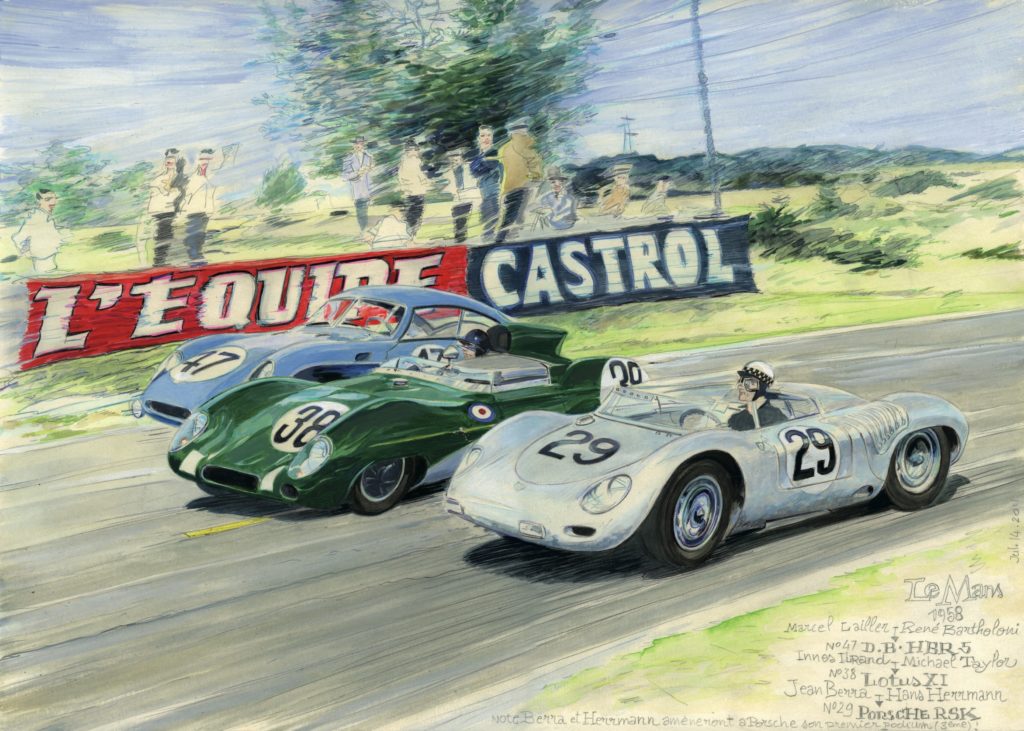
Later we moved to Sceaux fortunately [a suburb of Paris – ed.]. We were in a refuge city, a garden city, great. With the Parc de Sceaux in the 60s it was great, it was crazy, still old-fashioned with small farms, the shopping street, there were still printing houses, those who printed Bibi and Fricotin, Feet Nickelés … I was skateboarding and cycling, and at 14 I rescued a moto Solex from a cellar. I went straight to bikes, there was no moped between the two. I bought a Honda PC50, with 4 speeds and a horizontal motor: I though that had class. My father told me “You can ride a moto, but you have to buy them.”
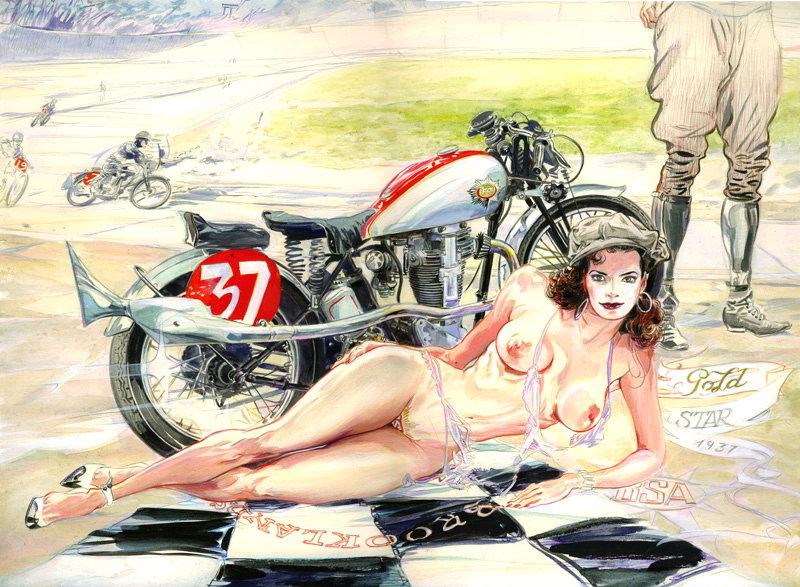
Later, I met Frank Margerin, who studied Applied Arts at the same time as me, and I went to flea markets with Los Crados, and we formed a good band. I was already doing comics, I decided it at age 11 because my father bought me Spirou, I always had the Spirou it gave me ideas. Franquin was my master, I managed to meet him and interview him before his death.
To come back to the past: what interested me, came from the past. To please the ladies, it was great, we did a concert on the Place de la République in ’81. We sang the twist, it was the easiest thing to sing, I did not think I was bad in English. We cut our hair and slicked it back. At the time the news was Yes and groups like that, I did not like them, so I stayed stuck in the past. I rediscovered the Early Beatles, which is pure Rock’n’roll, and their premiers on the BBC were crazy, McCartney sings great, as on Long Tall Sally.
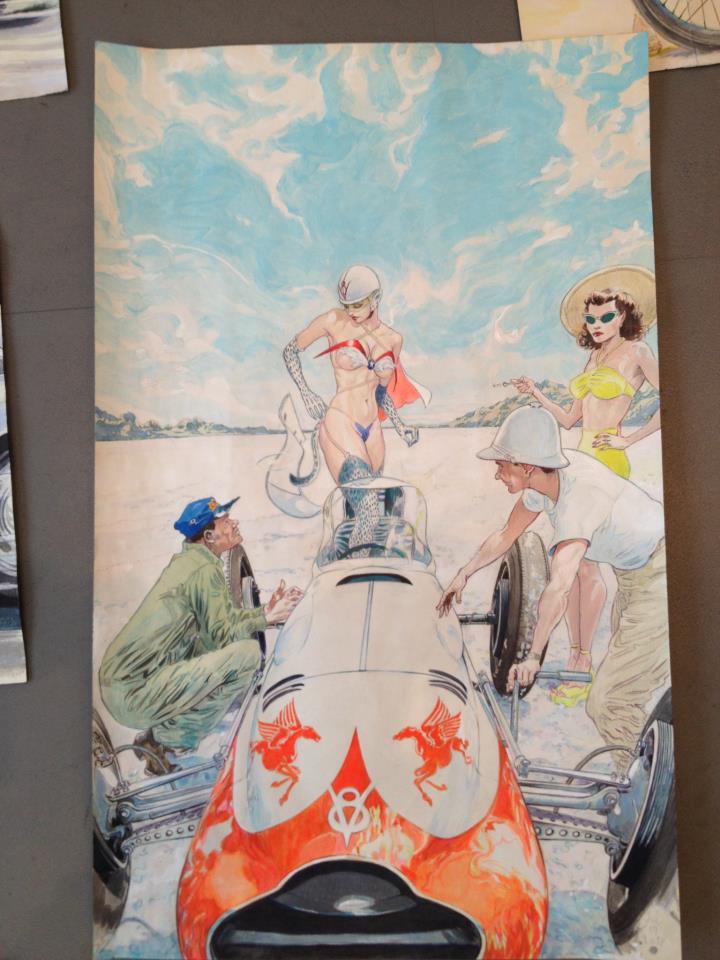
My father told me his stories from the war, it was fascinating, the Guérande peninsula. My grandfather Sire was an engineer at the Atlantic shipyards, he made sea tests from Normandy. My father was a great storyteller, where I discovered the childhood of my parents, and my grandparents.
I am also interested in history, of the 1940s among others, where the French social malaise comes from all accounts. The ’30s are very interesting, the Speed Twin Triumph, it dates back to the ’30s we did not invent anything better. These motorcycles were perfect machineries: we see that when we draw them.
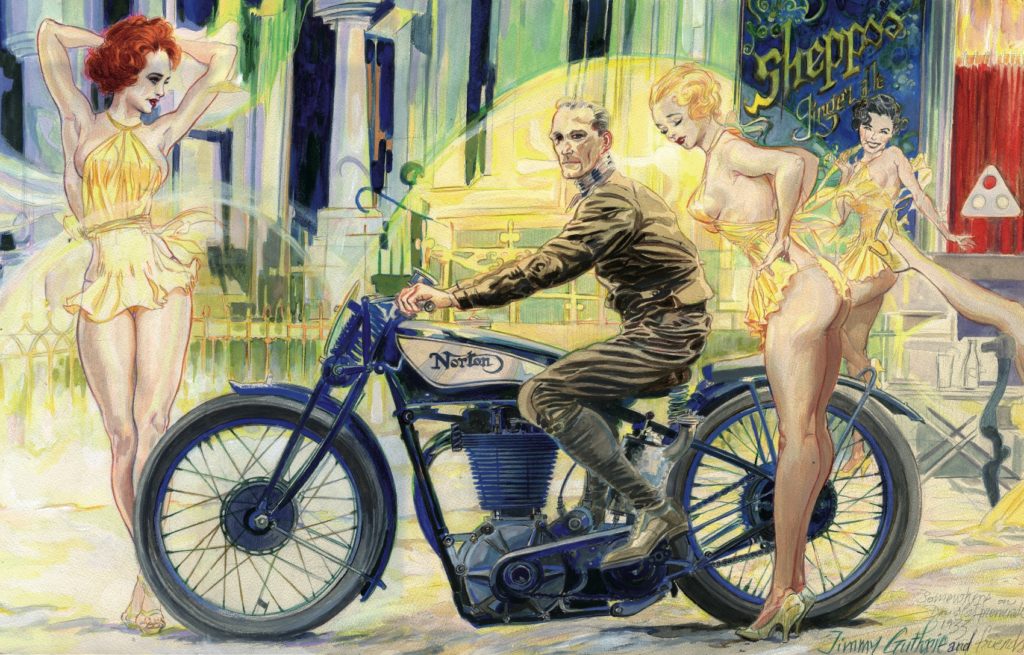
Your drawing stroke is very fine and dynamic, how do you work? I’m crazy, I cut my pencils to 0.5mm on the cutter to have a finesse. They are already thin and I size them more. I can not do that anymore because of my eyes. In my Zybline and Bettie comics, I worked in India ink, extremely fine. It was wash and brush. With Willys Wood, we were influenced by a lot of people, including Americans. With Will Eisner and The Spirit he used the same technique. I met him through Heavy Metal for the first time, with my first print publication.
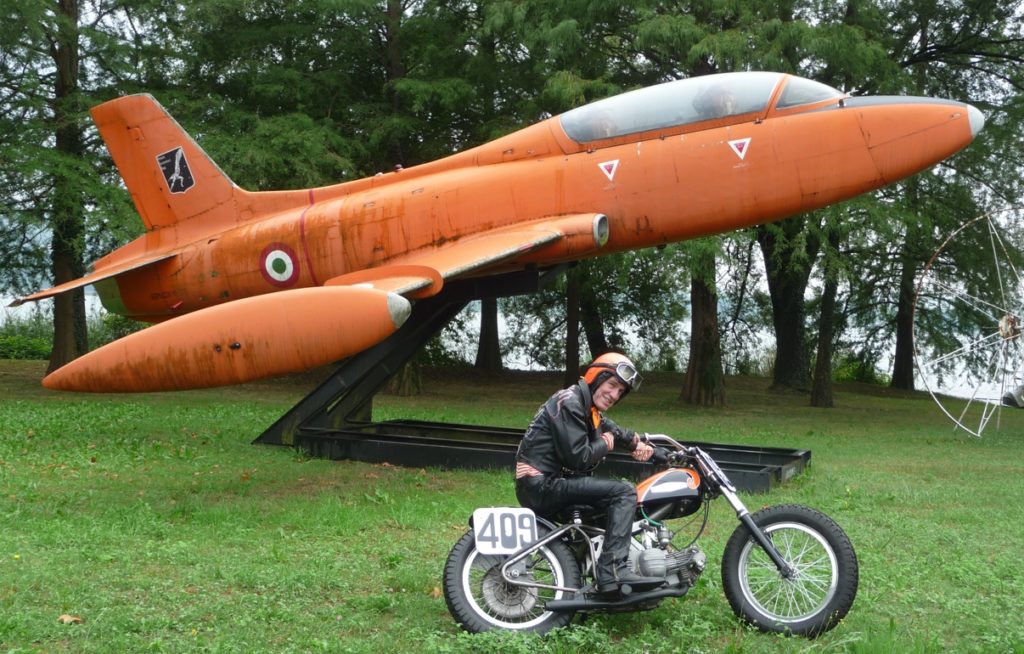
Willys Wood, this is a reference to the Betty Page pinup? I discovered Betty Page through Jean-Pierre Dionnet and it was a timeless love story. She was also the muse of Dave Stevens.
In your artistic journey, if there was anything to change, what would it be? Better to surround myself. All alone is rather hard, especially since I do not know how to sell myself.
You are edited by Zanpano Editions, is there a comics project at home? No, no comic book, a Volume 3 of Dolls of Sire and then that’s it.
Do you work for hire? Yes, I’m currently working with Vincent Marquis on the Continental tire brand, but that’s another approach. There are delays, more constraints, and an order remains an order.
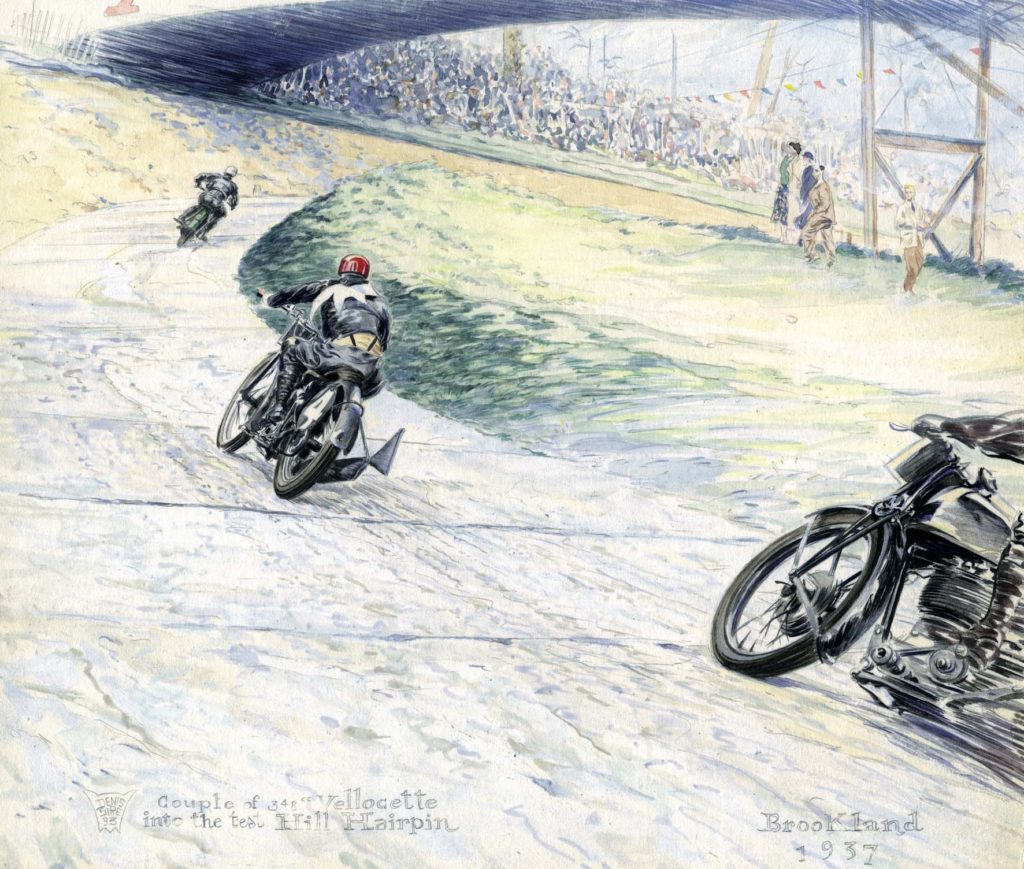
Do you work on media other than paper? No, I had proposals for cars, but I don’t see too much interest. I want to use perspective, but they want flames: what Alexander Calder did on the BMW LeMans racer was great – it suited the car. Calder it is not figurative and it would be more in that sense that I would work.
Have you ever wanted to re-group a rock band? We would only want to go back on stage. But hey, there was the death of Schultz [of Parabellum], which clipped my wings a little. And then, there is the alcohol, the drugs, and you say to yourself “What am I doing? I do with, or I do without?” When we look at the history of Rock all this is related, it’s the same for the bluesmen: they drink, their fingers are messed up, but they’re high and continue to play. There is time to consider too, you can not do everything at once; family life, drawing, music, motorcycle. It’s a lot. When I was with Dennis Twist, I could not do comic books, because when you draw there is an immersion that has to be done.
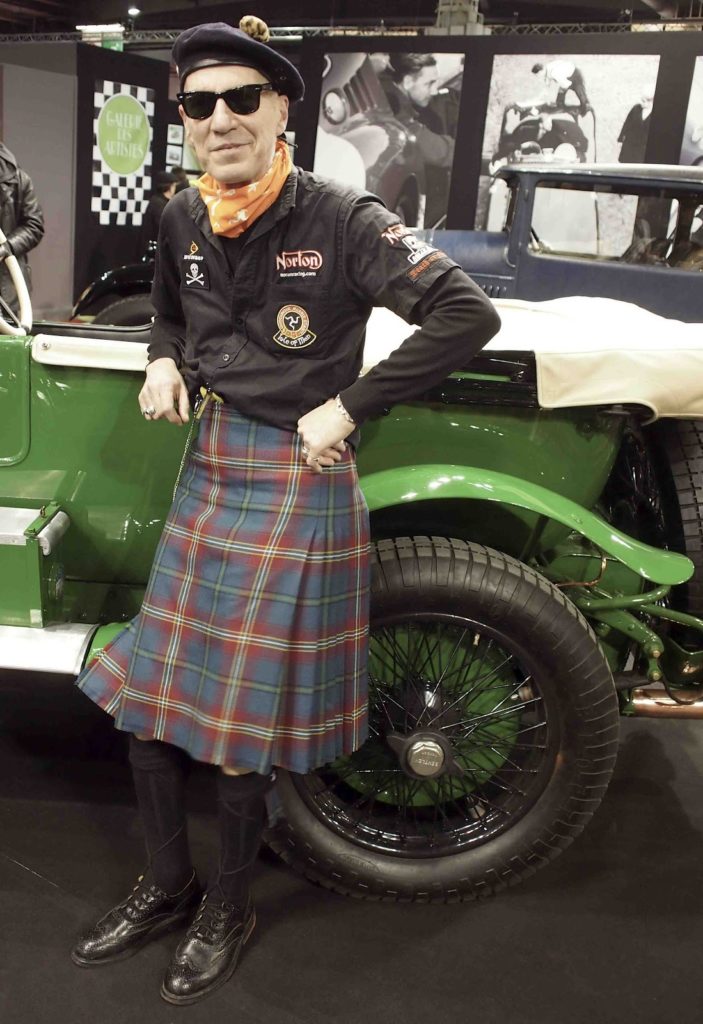
It’s hard to say. Like that, nothing comes to me. The regrets, they are more connected to the losses of original drawings, from the flights, and there were many. Once in the United States especially, when I worked for Heavy Metal: a poster that I had to fly to New York. I found the original for sale by one of my gallery owners, he had bought in a Comics Convention! Another time, returning from Rome, I lost a whole box on Harley-Davidson, for whom I worked. But that loss is even more stupid, more annoying.
For your Pin-Up drawings do you work with models? I drew the Heavy Metal boss’s wife, but it depends.
Today, if we want an original Denis Sire, how do we find one?
There are exhibitions that I do sometimes, but I do not sell live, I do not sell myself either, it is better to go through my publishing house.
What are your available collections?
‘Denis Sire’ at Nickel Chromium Editions
‘The Amazon Island’ at Albin Michel
‘Bois Willys’ by Les Humanoides Associes
[Interview conducted on Dec. 20 2015 by Philippe Pillon for monsieurvintage.com]
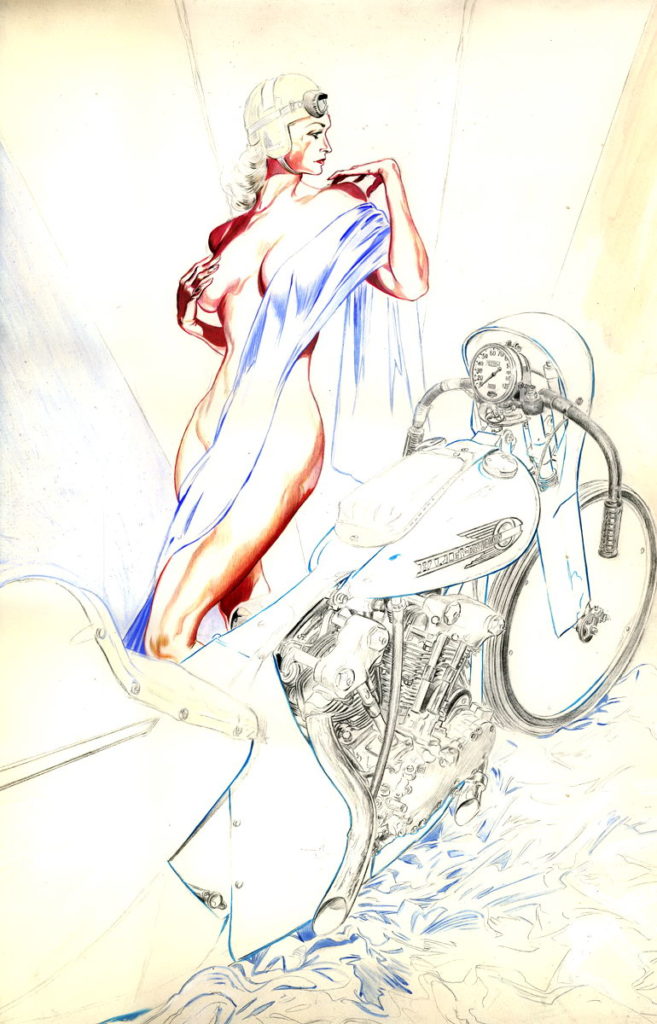
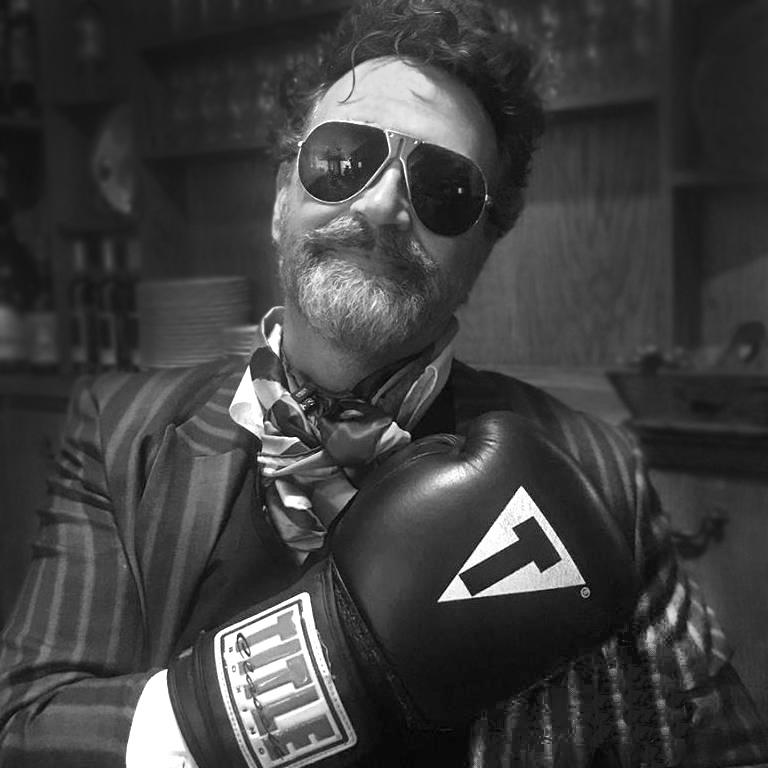

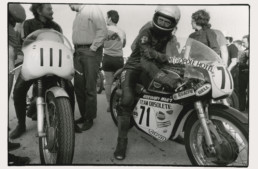
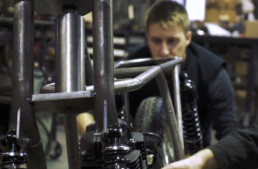
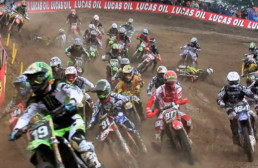
Yet still no Patrick Godet tribute ?
Hmmmm …. interesting …. vellee interesting …. but err ……………..
😉
Had never heard of this guy, really amazing work. Would love to get a few prints
Paul, your retrospective on Denis Sire is one of my all-time faves from The Vintagent! He was a brilliant illustrator, and who can argue with the subject matter? Great stuff!
There were motorcycles in those pictures? Are you sure? 🤣